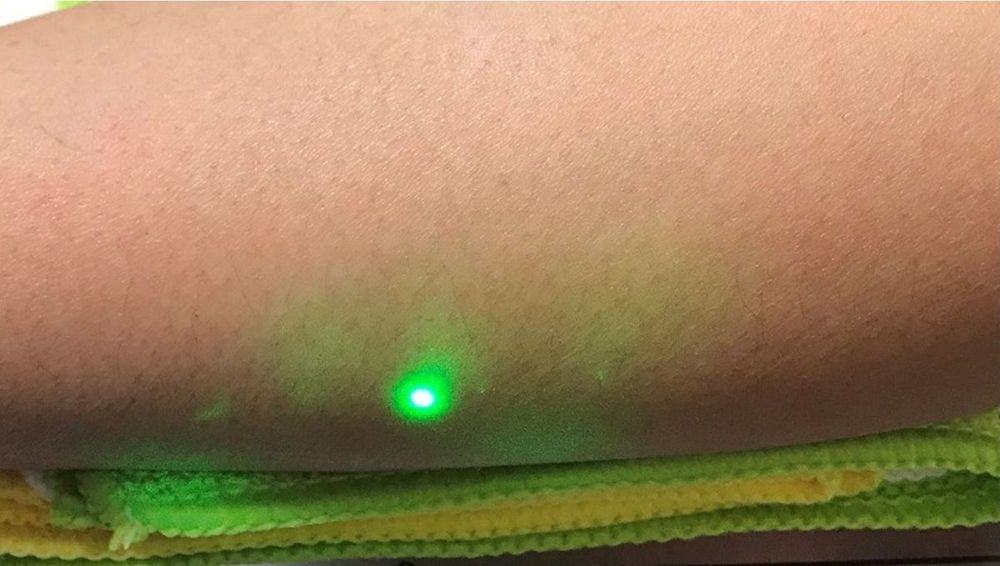Generating and detecting sound waves remotely means patients can be spared the discomfort that sometimes comes with conventional ultrasound imaging.



Duchenne muscular dystrophy (DMD) is one of the most common and most devastating muscular diseases, greatly reducing patients’ quality of life and life expectancy. Now, researchers in Germany have managed to use the CRISPR gene-editing tool to correct the condition in pigs, bringing the treatment ever closer to human trials.
A protein called dystrophin is necessary for muscles to regenerate themselves, but people with DMD have a genetic mutation that removes the gene that produces dystrophin. That means that affected children usually begin to show symptoms of muscle weakness by age five, lose the ability to walk by about age 12, and rarely live through their 30s as their heart muscles give out.
Because it’s a genetic condition, DMD is a prime target for treatment with the gene-editing tool CRISPR. This system is prized for its ability to cut out problematic genes and replace them with more beneficial ones, and has been put to work treating cancer, HIV and forms of blindness.
In the future, you can set-up personal mini-networks with people you would like to share your thoughts…
#AI #DL #DataScience #Robotics #FinServ #AI #MachineLearning #DeepLearning #BigData #Fintech #Insurtech #Datascience #Marketing #ML #DL #Robotics #HealthTech #martech #tech

I’m excited to share my new opinion piece on AI facial recognition and privacy for IEEE Spectrum:
The views expressed here are solely those of the author and do not represent positions of IEEE Spectrum or the IEEE.
Many people seem to regard facial-recognition software in much the same way they would a nest of spiders: They recognize, in some abstract way, that it probably has some benefits. But it still gives them the creeps.
It’s time for us to get over this squeamishness and embrace face recognition as the life-enhancing—indeed, life–saving—technology that it is. In many cities, closed-circuit cameras increasingly monitor streets, plazas, and parks around the clock. Meanwhile, the price of recognition software is decreasing, while its capabilities are increasing.
I welcome these trends. I want my 9-year-old daughter tracked while she walks alone to school. I want a face scanner at Starbucks to simply withdraw the payment for my coffee from my checking account. I want to board a plane without fumbling for a boarding pass. Most of all, I want murderers or terrorists recognized as they walk on a city street and before they can cause further mayhem.


The Centers for Disease Control and Prevention and health officials continue to grapple with the coronavirus outbreak that has killed at least 81 people in China and sickened 2,800 worldwide. And back in 2018, Billionaire Bill Gates gave a warning that the world wasn’t prepared for pandemics, which should “concern us all.”
Speaking at an event hosted by Massachusetts Medical Society and the New England Journal of Medicine (NEJM) on April 27, 2018, Gates said he believed “the world needs to prepare for pandemics in the same serious way it prepares for war.”
“This preparation includes staging simulations, war games and preparedness exercises so that we can better understand how diseases will spread and how to deal with responses such as quarantine and communications to minimize panic,” Gates said.

A magnitude 7.7 earthquake struck Tuesday about 80 miles from Jamaica, shaking people in the Caribbean and as far away as Miami.
A tsunami of 0.4 feet was recorded in the Cayman Islands at George Town, but no tsunami was observed at Port Royal, Jamaica, or Puerto Plata, Dominican Republic.
A tsunami threat alert was lifted Tuesday afternoon, a few hours after the quake.

LAWRENCE, KS (KCTV) — Lawrence Memorial Hospital has a patient currently being held in isolation who may have coronavirus.
The hospital says the patient recently entered the United States from Wuhan, China, and showed symptoms of a respiratory illness.
Procedures are underway to treat the patient while minimizing exposure. These procedures, the hospital says, include placing the patient in isolation in a room specially designed for infection prevention.

Essentially the higgs boson could create a replicator and even a teleportation device.
Can you think of any? Here’s what I mean. When we set about justifying basic research in fundamental science, we tend to offer multiple rationales. One (the easy and most obviously legitimate one) is that we’re simply curious about how the world works, and discovery is its own reward. But often we trot out another one: the claim that applied research and real technological advances very often spring from basic research with no specific technological goal. Faraday wasn’t thinking of electronic gizmos when he helped pioneer modern electromagnetism, and the inventors of quantum mechanics weren’t thinking of semiconductors and lasers. They just wanted to figure out how nature works, and the applications came later.

So what about contemporary particle physics, and the Higgs boson in particular? We’re spending a lot of money to look for it, and I’m perfectly comfortable justifying that expense by the purely intellectual reward associated with understanding the missing piece of the Standard Model of particle physics. But inevitably we also mention that, even if we don’t know what it will be right now, it’s likely (or some go so far as to say “inevitable”) that someday we’ll invent some marvelous bit of technology that makes crucial use of what we learned from studying the Higgs. So — anyone have any guesses as to what that might be? You are permitted to think broadly here. We’re obviously not expecting something within a few years after we find the little bugger. So imagine that we have discovered it, and if you like you can imagine we have the technology to create Higgses with a lot less overhead than a kilometers-across particle accelerator.

Michigan State University and Stanford University scientists have invented a nanoparticle that eats away—from the inside out—portions of plaques that cause heart attacks.
Bryan Smith, associate professor of biomedical engineering at MSU, and a team of scientists created a “Trojan Horse” nanoparticle that can be directed to eat debris, reducing and stabilizing plaque. The discovery could be a potential treatment for atherosclerosis, a leading cause of death in the United States.
The results, published in the current issue of Nature Nanotechnology, showcases the nanoparticle that homes in on atherosclerotic plaque due to its high selectivity to a particular immune cell type—monocytes and macrophages. Once inside the macrophages in those plaques, it delivers a drug agent that stimulates the cell to engulf and eat cellular debris. Basically, it removes the diseased/dead cells in the plaque core. By reinvigorating the macrophages, plaque size is reduced and stabilized.